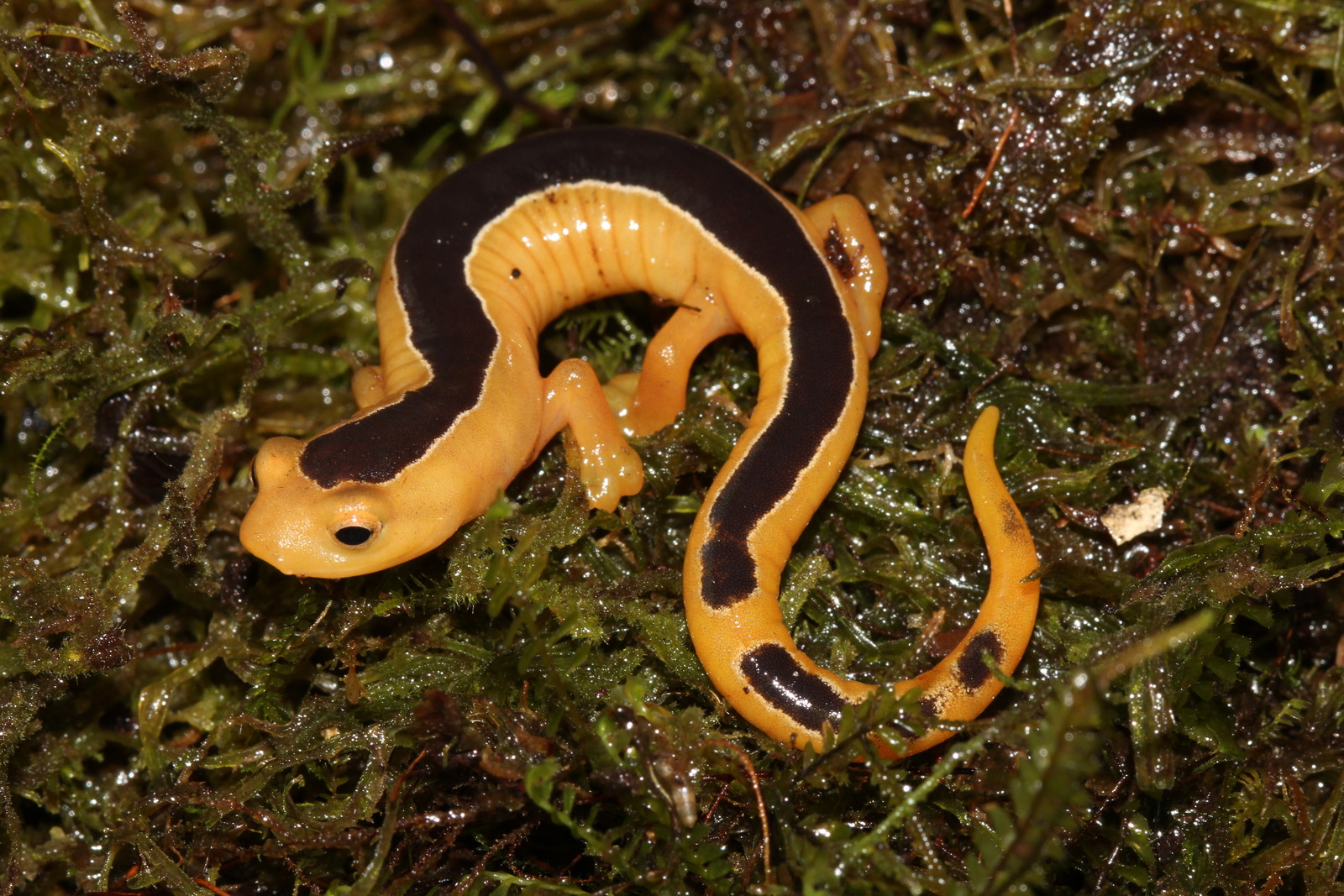'Lost' Salamander Rediscovered After 42 Years

A lost species of salamander has been rediscovered alive and well in Guatemala.
The Jackson's Climbing Salamander (Bolitoglossa jacksoni), a brilliant yellow-and-black amphibian, was last seen in 1975 and feared extinct. But this month, a guard at the Finca San Isidro Amphibian Reserve (also called the Yal Unin Yul Witz Reserve) in the Cuchumatanes Mountains spotted a juvenile of the species while out on patrol. The guard, Ramos León, snapped a photo and sent it to Carlos Vasquez, a curator of herpetology at USAC University in Guatemala, who confirmed its identity.
Vasquez himself had spent more than 3,000 hours hunting for the salamander since 2005, and trained León and his fellow guards on how to search for it.
"We had started to fear that the species was gone, and now it's like it has come back from extinction," he said. "It's a beautiful story and marks a promised future for the conservation of this special region." [Golden Wonder: Photos of the Jackson's Climbing Salamander]
Stunning rediscovery
The Jackson's Climbing Salamander is known as the "golden wonder" for its bright-yellow body, which is topped by a black streak running from its head to most of the way down its tail. It's named after its discoverer, Jeremy Jackson, who first identified it while exploring the Cuchumatanes with his friend Paul Elias, who was a college student at the time. They found three new species of salamander on that trip, including the long-limbed salamander (Nyctanolis pernix) and the Finca Chiblac Salamander (Bradytriton silus). Those species were found again on expeditions in 2009 and 2010, but the Jackson's salamander stayed missing.
The nonprofit group Global Wildlife Conservation put the Jackson's salamander on its Top 25 "most wanted species" list as part of its Search for Lost Species initiative. The initiative, which launched in April, aims to seek out 25 species that have not been seen for years or decades but aren't confirmed extinct. Among them are the Wondiwoi tree kangaroo (Dendrolagus mayri), seen only once in 1928 in Indonesia, and the pink-headed duck (Rhodonessa caryophyllacea), last seen in Myanmar in 1949.
Finding lost species
It was shocking to find the Jackson's salamander so quickly, said Lindsay Renick Mayer, a spokesperson for Global Wildlife Conservation. The group had planned an expedition to the region to search for the salamander in January, but León found the amphibian first.
Sign up for the Live Science daily newsletter now
Get the world’s most fascinating discoveries delivered straight to your inbox.
"The night I got the news from Carlos that Bolitoglossa jacksoni had been rediscovered, I flew off the couch where I'd been falling asleep, let loose a string of expletives (in a good way), and did a little happy dance," Jackson, the salamander's original discoverer, said in a statement. He went on to praise the reserve that has protected the unwitting salamander species throughout the years.
"I'm more than delighted that Yal Unin Yu Witz exists so that Jacksoni and other wonders can survive, and I'm so pleased to hear that it was a guard protecting the preserve who found this beauty," he said.
"I love this story because it conveys how protecting habitat gives species a fighting chance to survive on this planet," Don Church, the president of the Austin, Texas-based Global Wildlife Conservation, said in the statement. "This rediscovery can only be a good omen for the future of the Search for Lost Species campaign. It's a sign that if we get out there and work at it, many of these species can be found and saved."
Original article on Live Science.

Stephanie Pappas is a contributing writer for Live Science, covering topics ranging from geoscience to archaeology to the human brain and behavior. She was previously a senior writer for Live Science but is now a freelancer based in Denver, Colorado, and regularly contributes to Scientific American and The Monitor, the monthly magazine of the American Psychological Association. Stephanie received a bachelor's degree in psychology from the University of South Carolina and a graduate certificate in science communication from the University of California, Santa Cruz.









